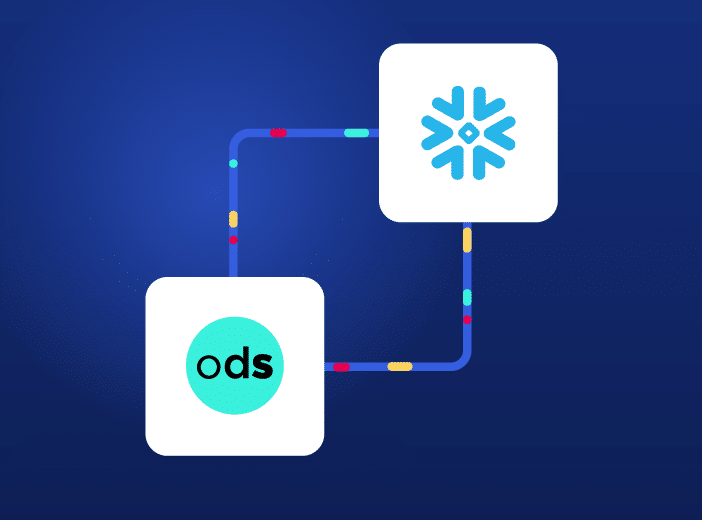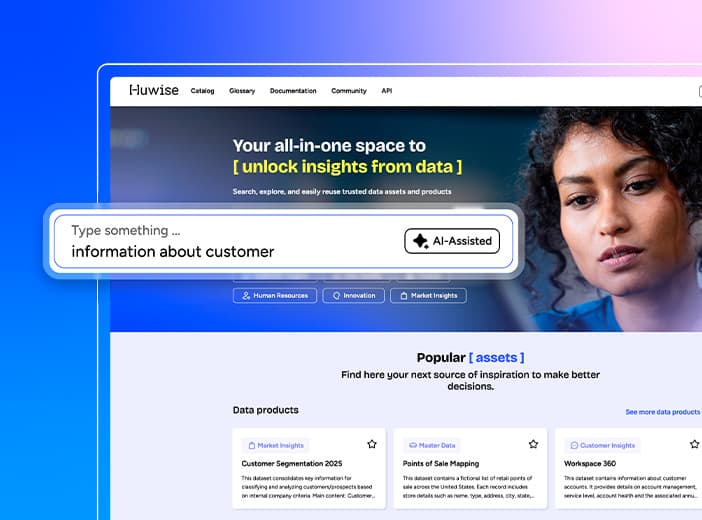Increasing data monetization with AI – best practices from McKinsey
Monetizing data internally and externally is crucial to increasing its value and ROI. However, delivering its full value can be difficult. New recommendations from McKinsey explain how deploying generative AI helps transform monetization and data consumption, creating significant value.

In every organization, Chief Data Officers (CDOs) face growing pressure to increase value from the data they are responsible for. They need to monetize it internally and externally to provide a concrete ROI on data investments through greater productivity, innovation and revenues.
In fact, research from consultants McKinsey has found that nearly a third (28%) of business leaders believe they have data assets that could be monetized, but that currently have unrealized commercial potential. This data can be used to both drive new revenues and increase internal efficiency and innovation.
Achieving full data monetization can appear daunting, and many organizations have only just begun to financially benefit in this area. To help maximize value from data, McKinsey has published new recommendations, showing how generative AI can provide the capabilities and frameworks to effectively increase and scale monetization.
Taking the next steps in data monetization
Organizations and CDOs have invested heavily to unlock value from their data, with many launching initiatives and programs focused on areas such as data warehouses, analytics and dashboards. This has delivered some benefits, but has not necessarily led to wide-scale data consumption or monetization. McKinsey’s new article, Intelligence at scale: Data monetization in the age of gen AI explains how to release data’s significant untapped potential.
The current state of data monetization
First, it is important to understand what data monetization covers. McKinsey defines it as “using data to generate quantifiable economic benefit by selling it to third parties, deploying it internally to improve business outcomes, or creating new data-driven products and services.” Its experience shows that top-performing organizations attribute 11% of their revenues to data monetization – over five times more than similar, but lower-performing companies.
However, traditional data monetization, where raw data was made available internally and externally is under threat. Commoditization is pushing down the value it delivers, while regulatory pressure around sharing personal data adds to costs and limits usage without consent.
Understanding the data pyramid
To drive monetization this means that organizations need to move up McKinsey’s Data, Information, Knowledge, Wisdom (DIKW) pyramid to maximise value. This has four distinct levels:
- Data: The base layer, containing raw data that is often unprocessed, unstructured and fragmented. This data could be from transactions or sensor readings for example. Using this data is difficult given its basic nature.
- Information: The next layer up. This data is cleaned, contextualized and organized, enabling it to be presented in ways that deliver some understanding, such as through reports or dashboards. While this data has some value, it is static and difficult to adapt or personalize to specific needs.
- Knowledge: Data in this layer has been analyzed and interpreted to deliver some actionable insights, such as through predictive models. However, creating and interpreting knowledge requires expert analysis from data teams and business analysts, making it hard to scale across the organization. Data is not democratized or made available in usable ways directly to the business through self-service.
- Wisdom: The top of the pyramid that all companies should aspire to reach. Wisdom combines knowledge with judgement and real-world context to deliver actionable intelligence. Examples include autonomous decision-making workflows or context-driven intelligence and foresight. Achieving this gold standard is normally limited by technology and organizational complexity
Generative AI helps organizations at all levels of the pyramid, from automating the structuring and cleansing of raw data at the base layer to contextualising information and personalizing it at scale, thus increasing data monetization.
Creating and scaling intelligent data products
Gen AI is particularly useful in building data products that package, prepare, and transform raw data into actionable insights. These can go beyond traditional data products to provide more personalized, tailored insights that deliver recommendations and actions based on the user’s specific context and needs.
“Gen AI is starting to enable data products to deliver this level of decision-ready intelligence.”
It delivers these intelligent data products in two main ways:
Personalized content
Data products are designed to be consumed at scale to meet a significant business need in order to deliver value. That means that users are able to self-serve by drilling down into the data product to discover and access the insights they need. Gen AI takes this process a step further by understanding the specific needs of an individual user and automatically generating personalized insights, reports or recommendations tailored to their requirements. This could be an internal business user or an external customer for the data product. This increases the value and flexibility that data products deliver, without adding to production cost or complexity.
Real-time decision-making powered by agentic AI
Data assets, particularly data products, are critical to making better-informed, more timely decisions. Given the real-time nature of business today, organizations are looking to harness gen AI to automate decision-making and to deliver accurate, always up to date intelligence. Agentic AI is critical to achieving this, enabling autonomous coordination of complex tasks through collaboration between different AI agents to deliver a defined objective. AI agents enable the monetization of data by using it to drive productivity or sales opportunities or providing intelligence-as-a-service in specific domains.
Successfully deploying gen AI in your data stack
The capabilities of gen AI are developing at an incredibly rapid pace. That means that many organizations are still investigating and piloting how it can help them monetize data and maximize data consumption and value. McKinsey points to a three stage maturity process around building AI-enabled data businesses:
- Internal optimization – using gen AI internally to streamline data management and insights, improving decision-making and increasing productivity through automation.
- Opportunistic monetization – extending the use of gen AI to selected external data products and insights, such as by creating new analytics products or services for certain partners or customers.
- Full marketplace monetization – building standalone data businesses and revenue streams, with products sold through the company’s own or third-party data product marketplaces. These businesses deliver significant additional value as well as providing differentiation with customers and partners.
The importance of data product marketplaces
Simply creating data products is not enough to successfully monetize data internally or externally. Data products, whether traditional or gen AI-driven, have to be easy to discover and consume by non-technical users through self-service. This makes creating an effective data product marketplace critical to turning data into value.
Data product marketplaces provide a centralized storefront for data products for both humans and AI. They deliver the same intuitive, user-focused experience as on an e-commerce marketplace, making it easy for users to search for, discover, consume and provide feedback on data products. As with an e-commerce marketplace they allow users to ask data owners questions, creating a trusted collaboration space around data, as well as recommending other relevant data assets based on user behavior. Powerful security and user access management capabilities control access to data based on governance policies, as well as enabling data to be externally purchased and therefore monetized.
AI is a core component of leading data product marketplaces, such as Huwise’s solution. AI-powered natural language search delivers accurate, reliable results to human users, building trust and maximizing consumption. At the same time, Huwise makes data available in easily consumable, machine-readable ways, ensuring data becomes “AI-ready” and can be seamlessly discovered and ingested by AI models and agents, as well as being incorporated into AI systems by developers. The platform’s built-in Model Context Protocol (MCP) server enables the deployment of agentic AI, both to automate platform management and to deliver seamless business workflows.
The foundations for gen AI-driven data monetization
McKinsey sees a need for organizations to put in place six foundational capabilities to build and mature their AI-enabled data businesses. Moving through the different stages can take time, but mastering these dimensions provides a bedrock for success:
- Strategy and product: begin by creating a clear strategy and roadmap for your data monetization efforts, aligned with overall business strategy. Which are the areas where you can create competitive advantage and products from your data?
- Go-to-market strategy: how will you provide and sell your data products? It is important to understand and create pricing that goes beyond traditional flat-rate subscriptions, such as outcome- or usage-based models to maximize uptake and revenues.
- Technology and data: ensure that the right technology foundations are in place, particularly a data product marketplace that enables data products to be easily found and confidently consumed and monetized.
- People: creating new business models around data requires a team-based approach that brings together different skills, spanning technical, commercial and marketing. This may require the recruitment of new talent and the implementation of new ways of working.
- Operations and management: data businesses need to have the right organization in place to scale effectively. This means putting in place operational structures, particularly around governance, ethics and the protection of IP.
- Capital: the costs of developing and taking data products to market can be large, from development to compute investments. Organizations need to understand this and ensure that they deploy sufficient capital to enable success.
Monetizing data in the age of gen AI
Organizations recognize the need to maximize data consumption, and the requirement to shift from providing raw data internally and externally to delivering actionable intelligence. Success requires a focus on strategy and capabilities, moving up the data pyramid to achieve the creation of wisdom. Gen AI is central to this process, combined with powerful, intuitive data product marketplaces to make data assets easily available to drive monetization and to create new, data-driven businesses.
Want to learn more about how Huwise’s AI strategy benefits your data consumption programs? Contact our team to find out.
Share this post:
Articles on the same topic:






